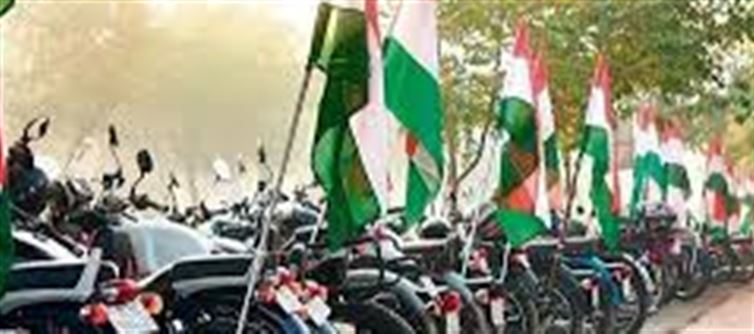Be it 15th
august or 26th January, on these occasions,
people show their patriotic enthusiasm by hoisting the tricolor on their homes, offices and vehicles. But do you know that some rules have been made for hoisting the flag, which are mandatory for everyone to follow. There are strict rules under the
indian Flag Code, 2002 and the Prevention of Insults to National Pride Act, 1971 for hoisting the tricolor on the vehicle. Violating these can also lead to punishment. Let's know what are the rules for hoisting the tricolor?
What are the rules for hoisting the tricolor
According to the rule, the common citizen does not have the right to hoist the tricolor on his personal vehicle and doing so is illegal. According to the
indian Flag Code, 2002 (Article 3.44), only
people holding certain constitutional posts can hoist the tricolor on their vehicle. Which includes the President, Vice President, Prime
minister, Union
cabinet minister,
minister of State and Deputy
minister of the Union, Governors of States, Lieutenant Governors, Chief Ministers,
cabinet Ministers, Speaker of Lok Sabha, Deputy Speaker of Rajya Sabha, Speakers/Deputy Speakers of Legislative Assemblies/Councils, Chief Justices/Judges of
supreme court and High Courts, Heads of
indian Missions abroad.
How to hoist the tricolor?
The tricolor should be hoisted in the middle of the bonnet of the vehicle or on a firmly tied pole on the right side.
The saffron color should always be on top, hoisting it upside down is considered an insult.
The tricolor should not be torn, dirty, or faded.
It should not touch the ground and should not be hoisted below any other flag.
The tricolor cannot be used for uniform, curtain or decoration.
Action will be taken for breaking the rules
If a person violates the rules, action can be taken under the National Honor Insult Prevention Act 1971. If found insulting the national flag, the punishment can be up to 3 years in jail, fine or both. Putting unauthorized tricolour on the vehicle is also considered a violation of this Act.





















